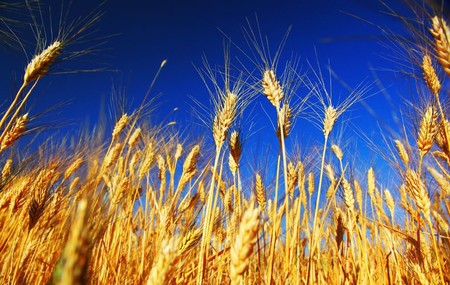Blame it on the Grains

I’ve been on a health kick lately. Over the past few months, I became more aware of what I put into my stomach, and how it can help my body. I’m a carnivore to say the very least, consuming good quality meat from quite a few local establishments on a weekly basis. I love burgers, carne asada burritos, steaks, chops and fresh fish. However, what I wasn’t entirely aware of is the wide variety of grains, their healthy attributes and hundreds of uses.
To start, I came across quinoa and was told of its nutritional makeup. Per 100 grams (uncooked) of the ancient South American seed, there are 64 grams of carbohydrates, 7 grams of fiber and 14 grams of protein. It has all of the essential amino acids, is a complete protein, has a good amount of vitamins and minerals, and is gluten-free. It’s also very easy to prepare. I used some salsa, blended it up, mixed it with chicken stock and cooked the quinoa in that with a 2-to-1 ratio of water to seed. The quinoa soaked up the flavors of the salsa and the chicken stock, and I served it with a chicken breast that had been slow cooking in the crock-pot all day. This was a very healthy and delicious meal if I do say so myself.
Next, I ventured into couscous, also known as pearl pasta in Western parts of the world, which is generally made from semolina flour. It’s rolled pellets sprinkled with water, then dusted with dry flour and rolled around by hand to slowly create larger pearls of pasta. This is a staple food in northern Africa and is very popular in France and the Middle East. I eat it often with sautéed veggies, and as I’ve stated, I love meat; so I enjoy a pork chop or two with it as well. Lamb is a good option to recreate a traditional European or Northern African dish. For one cup of couscous, there are 36 grams of carbohydrates and six grams of protein. There are quite a few ways to cook this dish but a good ratio is about 1.5-to-1 ratio of water to pasta. I toast my couscous in the pan to give a little more nuttiness to the dish by just putting the pearls into the pan and tossing them in oil over medium to medium-high heat. Throw in fresh thyme or rosemary to the couscous while cooking to add some extra flavor. The water will quickly absorb the herb’s essence, which will transfer to the couscous and create a much deeper dish.
Moving on to rice, making the right selection can be confusing at times. Nevertheless, brown rice or long grain rice is definitely the healthiest choice, since white rice has next to no nutritional value. All the good stuff is in the bran and germ of the grain, and white rice has been stripped of both. Long grain brown rice is very rich in fiber, minerals, and vitamins. It is also very simple to cook with a 2-to-1 ratio of water or cooking liquid to rice. I use veggie stock to cook my rice, but using low sodium beef or chicken stock will provide a flavorful grain to accompany any dish. For long grain brown rice, there are 45 grams of carbohydrates and five grams of protein per one cup, cooked.
Finally, we come to an Italian staple as well as a popular Southern side dish: polenta and/or cornmeal (grits in the South). The difference between the two is the fineness of the grind — cornmeal is very fine and polenta is usually slightly more coarse. Such a versatile grain, both grinds have a plethora of dishes that can be easily created, like a creamy polenta side dish with blue cheese or baking the cornmeal on a cookie sheet, cutting out squares or circles with a cutter, and then adding the soft cakes to a plate for a fancy presentation. Frying or boiling are other options as well. As far as nutrition goes, for 100 grams of polenta, there are 69 grams of complex carbohydrates and 8 grams of protein.
There are numerous types and varieties of grains, seeds and plants that will help healthy eaters when it comes to balancing the carbohydrate side of the equation. These are just a few examples of some of the healthy food superstars that will give a boost in energy and overall well-being.
Copyright TableAgent.com
© Restaurant Agent Inc.